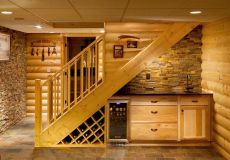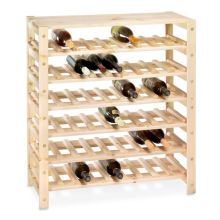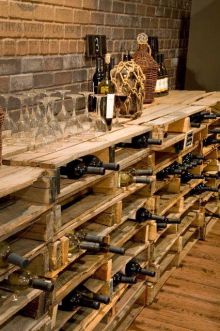Proper wine storage is key to your wine tasting as good as when it was purchased, and in many cases improving over time. Who hasn't bought a bottle or case anticipating opening it for a special occasion. Avoid the worst case scenario of opening a highly anticipated bottle only to find it spoiled by following a few simple guidelines.



Wine storage can be boiled down to a few simple rules. By following these rules as best you can, your wines will stay in prime condition for a longer period of time.
-Keep the temp as close to 55°F as possible, with little to no fluctuation
-Keep the corked wine bottles in darkness
-Keep the humidity at roughly 70%
-Keep the bottle of wine away from strong odors or flavors
-Keep the labels of stored bottles wrapped in plastic wrap
-Keep the bottle of wine away from any unnecessary vibrations
-Store wine bottles on their side to keep the cork from drying out and letting in oxygen. Even if cork isn't used, there is no advantage to storing wine upright
It's really that simple. Keep reading to learn more about why you need to follow these guidelines For now, let’s discuss some possible locations for storing wine.
Wine Storage Locations
Basements are usually the best and easiest place to change to the needed climate for corked wine bottles. It is best to keep your wine purchases in racks so they will not be subject to any moisture buildup. Many say that redwood makes the best wine rack because of its natural properties. You will still need to make sure that the basement fits all the needs of your wines before you go to the wine store. Another popular place to store wine is in the kitchen. This is most often done in specific wine coolers. Though there are also instructions for making a suitable wine storage location online. And in a pinch your refrigerator will work for short term storage. Though really, you need to make special changes to be able to store your wine in places like the garage, a storage shed, or a closet. Though of the three, an interior closet is your best bet and will work if you are low on options. Try to keep storage in mind before you go to the wine store and make your wine purchase. Though wines should not stay at room temperature for more than six months.
Wine Temperature
If your wine stays too warm for too long it can pick up off flavors. If it stays too cold, it won’t age. Though, that is fine for most wines which are ready to drink now. You also do not want temperature changes because they can lead to odd tastes or wine loss.
Light Levels
Keep your wine purchase out of light to avoid a flat or off flavor. This is caused by too much exposure to sunlight or fluorescent light. This is most important with white or light colored wines.
Humidity
The high, but not excessive humidity levels protect the cork seal from degrading. If your cork seal degrades, it can start letting liquid evaporate from the bottle. Or allow too much air into the bottle.
Odors and Flavors
The delicate and complex nature of wine can be overpowered. Especially by strong smells, and strong flavors. Think onions, garlic, and fish. None of us want our wine purchases to taste like that.
Labels
If you plan to sell your wines, you want to keep the labels perfect. Because of the high humidity it is best to wrap them carefully. A layer of plastic wrap will often work for this, though you might find other options.
Vibrations
Now this only applies to your wines that have sediment. Even then, there is no proof but better safe than sorry. Especially for costly wine purchases. The worry is that if the sediment becomes shaken in too much it might suspend and ruin the flavor of the wine.
That wraps up the basics of proper wine bottle storage. Now, you be ready for that next sophisticated dinner to impress the in-laws. Or even just to enjoy a few drinks with your friends. Proper storage can be complex for large collections, but start small and you will have it mastered in no time. Source: Make Wine Not War
